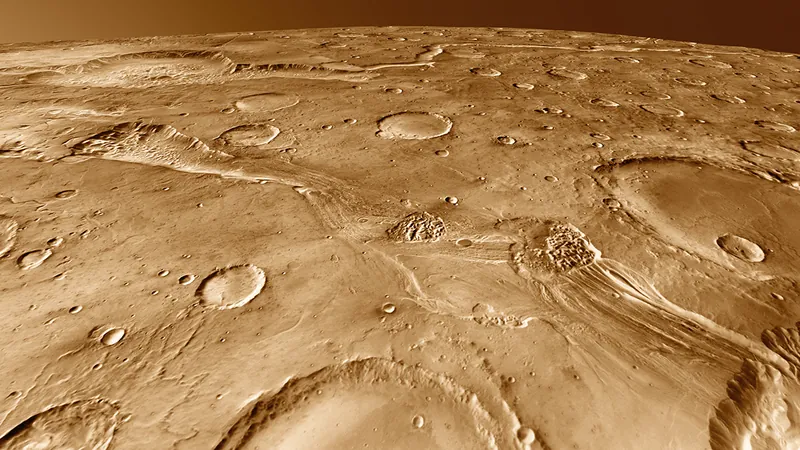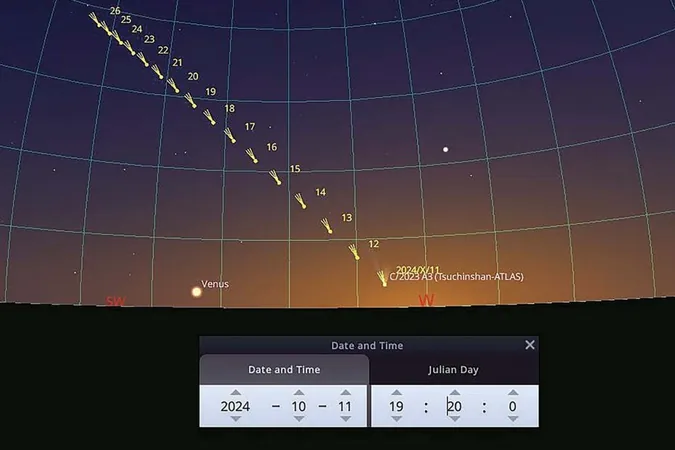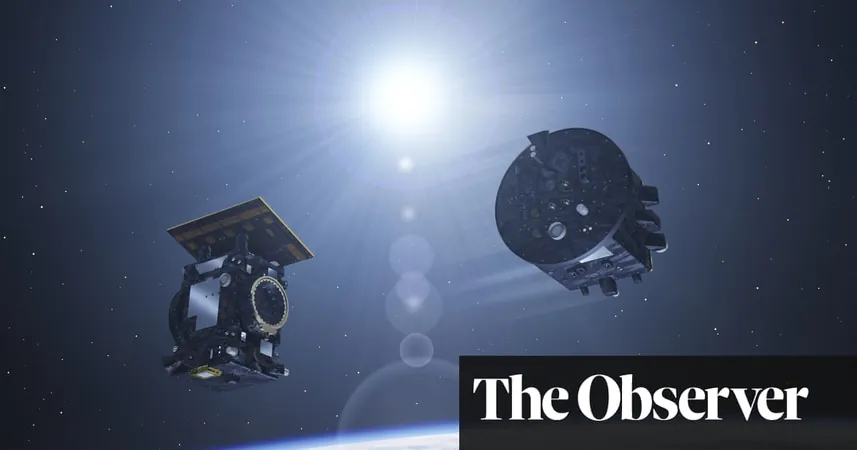
Discoveries on Mars: Five Craters Revealed as the Origins of a Third of Martian Meteorites!
2024-09-26
Exciting Discoveries on Mars
Exciting new research has revealed that five specific craters on Mars may be responsible for launching at least one-third of all known Martian meteorites into space. Unlike the plentiful meteorites that originate from asteroids, these Martian samples offer a unique window into the history and evolution of the Red Planet.
The Origins of Meteorites
The collection of approximately 60,000 meteorites found on Earth primarily comes from asteroids, particularly in stark desert regions such as Antarctica and Morocco. However, about 200 of these meteorites are believed to be Martian in origin, blasted into the cosmos by asteroid collisions. “They are actual samples of Mars,” states Chris Herd, a planetary geologist at the University of Alberta, underscoring the excitement surrounding these rare finds. Studying these meteorites can provide vital insights into the geological and atmospheric history of Mars.
Crater Analysis and Findings
Recent findings published in *Science Advances* shed light on five craters that scientists believe are the primary sources of these intriguing meteorites. The connection between meteorites and their originating craters is critical for scientists, as it helps reconstruct the geological narrative of the Martian landscape.
Unique Chemical Composition
The unique chemical composition of Martian meteorites allows researchers to confirm their origin—analysis of trapped gas bubbles within the rocks precisely mirrors the Martian atmosphere. Herd and his team meticulously examined six Martian meteorites, correlating them to five out of ten known pairing groups, suggesting they were born from the same impact event on Mars.
Methodical Search for Impact Sites
The search was methodical: by analyzing the craters' physical characteristics, they narrowed the focus to about 300 potential impact sites. They found that the meteorites were likely ejected within the last 20 million years, which led to a focus on relatively young craters that showcase features indicative of fresh impacts.
Identifying the Key Craters
Ultimately, they identified five craters with diameters ranging from 14 to 39 kilometers (9 to 24 miles). Among them was Tooting, already linked to a meteorite group, while the craters Chakpar, Corinto, Kotka, and Domoni were new discoveries. These findings represent a significant leap forward in the quest to understand Mars' geological history.
Cautions from Researchers
However, researchers like planetary scientist Stephanie Werner caution against drawing definitive conclusions. There’s significant debate within the scientific community regarding the ages of Martian meteorites—some may be billions of years old, leading to different implications for crater sourcing.
Unexplored Potential
Moreover, Herd's team uncovered several additional craters capable of ejecting material from Mars that don’t appear to have been linked to known meteorite groups. One such example is Zunil, located in the northern hemisphere of Mars. This raises the tantalizing possibility that there are still undiscovered Martian meteorites waiting to be found on Earth.
Looking Ahead
“This is, to me, the most exciting thing about this whole study,” Herd remarked. The implications of these discoveries are profound, pushing our understanding of Mars ever closer and igniting curiosity about the potential for more Martian materials waiting to journey to our planet.
Conclusion
Join us as we continue to unravel the mysteries of Mars and its relationship with Earth! Could we be on the brink of discovering new Martian meteorites that hold the key to understanding life beyond our planet? Stay tuned for more exhilarating updates from the cosmos!









 Brasil (PT)
Brasil (PT)
 Canada (EN)
Canada (EN)
 Chile (ES)
Chile (ES)
 España (ES)
España (ES)
 France (FR)
France (FR)
 Hong Kong (EN)
Hong Kong (EN)
 Italia (IT)
Italia (IT)
 日本 (JA)
日本 (JA)
 Magyarország (HU)
Magyarország (HU)
 Norge (NO)
Norge (NO)
 Polska (PL)
Polska (PL)
 Schweiz (DE)
Schweiz (DE)
 Singapore (EN)
Singapore (EN)
 Sverige (SV)
Sverige (SV)
 Suomi (FI)
Suomi (FI)
 Türkiye (TR)
Türkiye (TR)